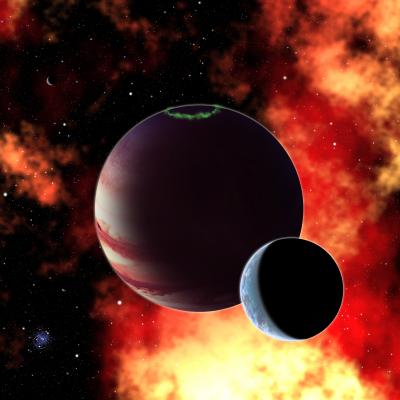The Moon Pandora from Avatar May Exist in Reality
The movie Avatar introduces us to the fascinating concept of humans exploring an alien moon called Pandora, which is not only habitable but also inhabited. This idea of life-bearing moons, such as Pandora or the forest moon of Endor from Star Wars, has long been a popular theme in science fiction. However, with the advancements made by NASA’s Kepler mission, the possibility of discovering Earth-sized objects and habitable moons is becoming more of a reality. In a recent study conducted by Smithsonian astronomer Lisa Kaltenegger, it has been revealed that the James Webb Space Telescope (JWST) will have the capability to analyze the atmospheres of these nearby habitable moons and identify important gases like carbon dioxide, oxygen, and water vapor.
Lisa Kaltenegger, from the Harvard-Smithsonian Center for Astrophysics (CfA), expressed her optimism about the potential discovery of a moon like Pandora in the near future. She stated, “If Pandora truly exists, we have the potential to detect it and thoroughly examine its atmosphere within the next ten years.”
Up until now, our searches for exoplanets have primarily focused on identifying gas giants similar to Jupiter in various orbital patterns. However, these gas giants are not suitable environments for supporting life as we understand it. Nevertheless, scientists have speculated about the possibility of a rocky moon orbiting a gas giant within the habitable zone of its star. This habitable zone refers to the region where temperatures are conducive to the existence of liquid water, a crucial ingredient for life as we know it.

Kaltenegger stated that all gas giant planets in our solar system possess rocky and icy moons, which suggests that alien Jupiters might also have moons. Some of these moons could potentially be similar in size to Earth and capable of retaining an atmosphere.
The Kepler mission focuses on identifying planets that pass in front of their host stars, causing a slight decrease in the star’s brightness. This transit event occurs for a short period and requires precise alignment between the star and planet along our line of sight. Kepler aims to survey numerous stars in search of a few with planets that exhibit transits.
Once an alien Jupiter is discovered, astronomers can investigate the presence of orbiting moons, known as exomoons. The gravitational pull of a moon would influence the planet’s transit, either accelerating or decelerating it depending on whether the moon is ahead or behind the planet. Variations in the duration of these transits would indicate the existence of a moon.Upon finding a moon, the next logical question would be whether it possesses an atmosphere. If it does, the gases within the atmosphere would absorb a portion of the star’s light during the transit, leaving behind a distinct signature that reveals the composition of the atmosphere.
The strongest signal is observed for large planets with expansive, hot atmospheres. However, under specific circumstances, it is possible to study an Earth-sized moon. For instance, the separation between the moon and planet must be significant enough to observe the moon’s transit independently while the planet remains positioned to one side of the star.Kaltenegger conducted calculations to determine the optimal conditions for studying the atmospheres of alien moons. She identified alpha Centauri A, the star system featured in the movie Avatar, as an excellent target for such investigations.
“Alpha Centauri A is a bright and nearby star that closely resembles our Sun, providing a robust signal,” explained Kaltenegger. “With just a few transits, we could potentially detect water, oxygen, carbon dioxide, and methane on an Earth-like moon like Pandora.”
She added that if the Avatar movie is accurate in its depiction, we could use the JWST to study and characterize that moon in the near future. While alpha Centauri A presents intriguing possibilities, it is the small, dim, red dwarf stars that offer better chances of finding habitable planets or moons. The habitable zone for a red dwarf is closer to the star, increasing the likelihood of a transit.
There has been a debate among astronomers regarding the potential issue of tidal locking with red dwarfs. A planet situated within the habitable zone would also be close enough to experience the star’s gravitational pull, causing it to slow down until one side always faces the star. This phenomenon is similar to how one side of the Moon always faces Earth. Consequently, one side of the planet would be constantly exposed to sunlight, while the other side would remain in perpetual darkness.However, this dilemma would not apply to an exomoon within the habitable zone. Instead of being tidally locked to the star, the moon would be tidally locked to its planet. As a result, it would have regular day-night cycles similar to Earth. The presence of an atmosphere would help moderate temperatures, and the entire moon would have a source of energy for potential plant life.
Kaltenegger stated, “Moons orbiting gas giant planets in alien systems may have a higher likelihood of being habitable compared to tidally locked Earth-sized planets or super-Earths. As we strive towards the ultimate goal of discovering alien life, we should certainly consider these possibilities.”
This article is republished from PhysORG under a Creative Commons license. Read the original article.
Do not forget to share your opinion with us to provide you with the best posts !




0 Comments